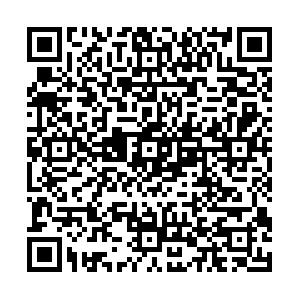Effects of interpersonal synchronization intervention on improving social behavior deficits children with autism spectrum disorder
-
摘要:
目的 探究人际同步干预对孤独症谱系障碍(ASD)儿童社交行为缺陷的改善效果,为优化ASD儿童社交干预方案提供有效指导。 方法 2022年9月—2023年3月,从内蒙古自治区精神卫生中心儿童青少年心理卫生医疗中心招募84例7~12岁ASD儿童,随机分为干预组(42例)与对照组(42例)。干预组执行为期7个月的社交互动游戏干预,每周平均2次,每次持续70 min,累计干预56次;对照组仅参与日常交流、合作等常规社交活动。分别在干预前后对两组ASD儿童交流行为指标(语言表达、语言理解与认知口语)与非适应行为指标(动作特征、情感表达与社会交际)采用心理教育量表(第3版)进行测试,并使用t检验分析干预前后两组ASD儿童社交行为指标差异。 结果 干预前,对照组与干预组ASD儿童语言表达、语言理解及认知口语得分差异均无统计学意义(t值分别为1.43,1.65,1.67,P值均>0.05);干预组在干预前的语言表达(76.29±2.34)、认知口语(84.24±2.13)评分均低于干预后(79.28±3.16,88.39±2.35)(t值分别为-4.17,-4.66),语言理解评分(85.64±2.30)高于干预后(83.33±1.28)(t=5.41)(P值均<0.05)。干预前,干预组与对照组动作特征、情感表达、社会交际的组间差异均无统计学意义(t值分别为1.05,1.46,1.69,P值均>0.05);干预后,干预组的动作特征(79.55±3.32)、情感表达(73.20±3.21)、社会交际(78.22±4.05)评分均高于干预前(72.24±3.43,69.33±4.18,76.21±3.14)(t值分别为7.10,5.51,4.24,P值均<0.05)。 结论 人际同步干预方案对ASD儿童社交行为缺陷具有良好改善效果。 Abstract:Objective To investigate the efficacy of interpersonal synchronous intervention on improving social behavioral deficits in children with autism spectrum disorder (ASD), in order to provide effective guidance for optimizing social intervention programs for ASD children. Methods From September 2022 to March 2023, 84 ASD children aged 7-12 years were recruited from the Children and Adolescents Mental Health Medical Center of Inner Mongolia Autonomous Region Mental Health Center. The test subjects were randomly divided into an intervention group (42 cases) and a control group (42 cases). A 7-month social interactive game intervention plan was implemented in the intervention group, with an average of 2 times per week, each lasting 70 minutes, for a total of 56 interventions; the control group only participates in routine social activites such as daily communication and cooperation. And tests were conducted on communication behavior indicators (language expression, language comprehension, and cognitive speaking) and maladaptive behavior indicators (action characteristics, emotional expression, and social communication) of two groups of ASD children before and after intervention, and the differences in various social behavior indicators between the two groups of ASD children before and after intervention were compared through paired sample t-test. Results Before the intervention, there were no significant differences in language expression, language understanding and cognitive oral scores of children with ASD between the intervention and control groups (t=1.43, 1.65, 1.67, P>0.05). The language expression (76.29±2.34) and cognitive speaking (84.24±2.13) scores of the intervention group before intervention were lower than those after intervention (79.28±3.16, 88.39±2.35) (t=-4.17, -4.66), and the language understanding score (85.64 ± 2.30) was higher than that after intervention (83.33±1.28) (t=5.41)(P < 0.05). Before intervention, there were no statistically significant differences in non adaptive behavior factors (motor characteristic, emotional expression, and social communication)between groups (t=1.05, 1.46, 1.69, P>0.05). After intervention, the intervention group had higher scores in motor characteristics (79.55±3.32), emotional expression (73.20±3.21), and social communication (78.22±4.05) compared to the control group (72.24±3.43, 69.33±4.18, 76.21±3.14) (t=7.10, 5.51, 4.24, P < 0.05). Conclusion The interpersonal synchronous intervention program has shown good improvement in the treatment of social behavior disorders in children with ASD. -
Key words:
- Interpersonal relations /
- Autistic disorder /
- Communication /
- Mental health /
- Intervention studies /
- Child
1) 利益冲突声明 所有作者声明无利益冲突。 -
表 1 干预前后两组ASD儿童交流行为和非适应性行为因子得分比较(x ±s)
Table 1. Comparison of communication and maladaptive behavior factor scores between two groups of ASD children before and after intervention(x ±s)
组别 干预前后 人数 统计值 交流行为 非适应行为 语言表达 语言理解 认知口语 动作特征 情感表达 社会交际 干预组 干预前 42 76.29±2.34 85.64±2.30 84.24±2.13 87.16±3.14 77.55±5.03 85.46±4.03 干预后 42 79.28±3.16 83.33±1.28 88.39±2.35 79.55±3.32 73.20±3.21 78.22±4.05 t值 -4.17 5.41 -4.66 7.10 5.51 4.24 P值 0.02 0.02 0.03 0.03 0.03 0.02 对照组 干预前 42 74.29±2.01 69.21±1.22 72.13±3.22 71.13±3.22 68.29±4.13 75.10±2.02 干预后 42 75.08±2.25 69.34±1.41 72.24±3.43 72.24±3.43 69.33±4.18 76.21±3.14 t值 -1.41 -1.39 -1.27 -1.92 -1.87 -1.49 P值 0.67 0.64 0.76 0.51 0.51 0.52 -
[1] HIROTA T, KING B H. Autism spectrum disorder: a review[J]. JAMA, 2023, 329(2): 157-168. doi: 10.1001/jama.2022.23661 [2] HILTON C L, CROUCH M C, ISRAEL H. Out-of-school participation patterns in children with high-functioning autism spectrum disorders[J]. Am J Occup Ther, 2008, 62(5): 554-563. doi: 10.5014/ajot.62.5.554 [3] ZUO X N, KELLY C, DI MARTINO A, et al. Growing together and growing apart: regional and sex differences in the lifespan developmental trajectories of functional homotopy[J]. J Neurosci, 2010, 30(45): 15034-15043. doi: 10.1523/JNEUROSCI.2612-10.2010 [4] 杨文睿, 崔思栋, 曾莉. 虚拟与增强现实对孤独症谱系障碍儿童青少年认知、情绪和适应性行为干预效果的系统综述[J]. 中国康复理论与实践, 2024, 30(9): 1026-1033.YANG W R, CUI S D, ZENG L. Effect of virtual and augmented reality on cognition, emotion and adaptive behavior in children and adolescents with autism spectrum disorder: a systematic review[J]. Chin J Rehabil Theory Pract, 2024, 30(9): 1026-1033. (in Chinese) [5] STEIN M B, ANDREWS A M. Serotonin states and social anxiety[J]. JAMA Psychiatry, 2015, 72(8): 845-847. doi: 10.1001/jamapsychiatry.2015.0486 [6] 赵楠, 潘威. 自闭症儿童早期干预中家长介入的优势、困境及应对策略[J]. 中国特殊教育, 2020, 26(10): 22-26, 57.ZHAO N, PAN W. The advantages, difficulties and countermeasures of parent-mediated early intervention for children with autism[J]. Chin J Spec Educ, 2020, 26(10): 22-26, 57. (in Chinese) [7] 张文君. 自闭症谱系障碍学龄前儿童动作模仿的特征及人际神经同步机制[D]. 济南: 济南大学, 2023.ZHANG W J. Characteristics and interpersonal neural synchronization mechanisms of motor imitation in preschoolers with autism spectrum disorders[D]. Jinan: University of Jinan, 2023. (in Chinese) [8] 欧阳茜, 赖媛, 陈杰荣, 等. 人际关系发展干预对孤独症儿童亲子互动及社会技能发展的影响[J]. 中国临床心理学杂志, 2021, 29(5): 1110-1114, 1098.OUYANG Q, LAI Y, CHEN J R, et al. Preliminary efficacy of relationship development intervention: effect on children with autism[J]. Chin J Clin Psychol, 2021, 29(5): 1110-1114, 1098. (in Chinese) [9] 黄亮, 任翰林, 陈顺森, 等. 自闭症个体肢体语言加工缺陷的特征及干预策略[J]. 中国特殊教育, 2018, 25(6): 47-52.HUANG L, REN H L, CHEN S S, et al. Autistic individuals' body language processing deficits: features and intervention strategies[J]. Chin J Spec Educ, 2018, 25(6): 47-52. (in Chinese) [10] 陈雁, 李晶. 人际同步对孤独症儿童合作行为的影响及干预促进[J]. 心理科学进展, 2024, 32(4): 639-653.CHEN Y, LI J. The impact of interpersonal synchronization on autistic children's cooperative behavior and its intervention promotion[J]. Adv Psychol Sci, 2024, 32(4): 639-653. (in Chinese) [11] 赵丽华, 李晶. 孤独症谱系障碍儿童非典型人际同步表现及其神经机制[J]. 中国儿童保健杂志, 2023, 31(3): 274-278.ZHAO L H, LI J. Atypical interpersonal synchronization and its neural mechanism in children with autism spectrum disorder[J]. Chin J Child Health Care, 2023, 31(3): 274-278. (in Chinese) [12] 美国精神医学学会. 精神障碍诊断与统计手册[M]. 5版. 张道龙, 肖茜, 译. 北京: 北京大学出版社, 2016.American Psychiatric Association. Diagnostic and statistical manual of mental disorder[M]. 5th ed. ZHANG D L, XIAO Q, translated. Beijing: Peking University Press, 2016. (in Chinese) [13] EAVES R, MILNER B. The criterion-related validity of the Childhood Autism Rating Scale and the autism behavior checklist[J]. Abnorm Child Psychol, 1993, 21(5): 481-491. doi: 10.1007/BF00916315 [14] 江茂欣, 鲁迟, 佘韵婕, 等. 分阶综合社交技能训练对孤独症谱系障碍儿童社交认知的干预效果[J]. 中国临床心理学杂志, 2023, 31(1): 250-254.JIANG M X, LU C, YU Y J, et al. Effects of graded comprehensive social skills intervention on social cognition in children with autism spectrum disorder[J]. Chin J Clin Psychol, 2023, 31(1): 250-254. (in Chinese) [15] 曾小梅, 刘文欣. "RMSO"社交游戏干预模式下提升孤独症儿童社交沟通能力的实证研究[J]. 豫章师范学院学报, 2025, 40(1): 104-112.ZENG X M, LIU W X. "RMSO" social game intervention model improvement empirical study on social communication ability of autism children[J]. J YuZhang Norm Univ, 2025, 40(1): 104-112. (in Chinese) [16] 协康会. PEP-3自闭症儿童心理教育评核[M]. 3版. 香港: 商务印书馆, 2009: 38-52.Heep Hong Society. PEP-3 Psychoeducational Profile for Children with Autism[M]. 3rd ed. Hong Kong: Commercial Press, 2009: 38-52. (in Chinese) [17] 朱凯轩, 王宇翔, 王献娜, 等. 学龄前孤独症谱系障碍儿童的睡眠障碍及其与社交行为的相关性[J]. 中国康复理论与实践, 2023, 29(5): 608-614.ZHU K X, WANG Y X, WANG X N, et al. Sleep disturbance and association with social behavior in preschool children with autism spectrum disorder[J]. Chin J Rehabil Theory Pract, 2023, 29(5): 608-614. (in Chinese) [18] 刘丽, 胡孙裔, 汪天华, 等. 小组体育游戏干预对孤独症谱系障碍儿童社交能力及生活质量的影响[J]. 中国学校卫生, 2024, 45(1): 110-114, 120. doi: 10.16835/j.cnki.1000-9817.2024003LIU L, HU S Y, WANG T H, et al. Effects of group sports game intervention on social skills and quality of life in children with austism spectrum disorders[J]. Chin J Sch Health, 2024, 45(1): 110-114, 120. (in Chinese) doi: 10.16835/j.cnki.1000-9817.2024003 [19] 吴思衡, 王灏, 张雨晴, 等. 分享-合作团体大社交提升孤独症儿童亲社会行为的干预效果[J]. 中国临床心理学杂志, 2024, 32(3): 689-694.WU S H, WANG H, ZHANG Y Q, et al. Effects of sharing-cooperation group social intervention to improve prosocial behavior in children with autism spectrum disorder[J]. Chin J Clin Psychol, 2024, 32(3): 689-694. (in Chinese) [20] 沙鹏, 张海滨, 刘全礼. 沙盘游戏治疗对孤独症谱系障碍儿童社会交往行为发展的影响[J]. 中国特殊教育, 2022, 2(8): 51-59.SHA P, ZHANG H B, LIU Q L. The effect of sandplay therapy on social interaction behavior development of children with autism spectrum disorders[J]. Chin J Spec Educ, 2022, 2(8): 51-59. (in Chinese) [21] MCNAUGHTON K A, REDCAY E. Interpersonal synchrony in autism[J]. Curr Psychiatry Rep, 2020, 22(3): 12. [22] ZAMPELLA C J, CSUMITTA K D, SIMON E, et al. Interactional synchrony and its association with social and communication ability in children with and without autism spectrum disorder[J]. J Autism Dev Disord, 2020, 50(9): 3195-3206. http://www.xueshufan.com/publication/3005783519 [23] 马昕玥, 崔丽莹. 人际同步对合作行为的促进机制及解释模型[J]. 心理科学进展, 2022, 30(6): 1317-1326.MA X Y, CUI L Y. Mechanisms and models of interpersonal synchrony in promoting cooperation[J]. Adv Psychol Sci, 2022, 30(6): 1317-1326. (in Chinese) -

 点击查看大图
点击查看大图
表(1)
计量
- 文章访问数: 242
- HTML全文浏览量: 146
- PDF下载量: 23
- 被引次数: 0





 下载:
下载: